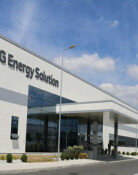[Editorial] Curbing Construction Costs
[Editorial] Curbing Construction Costs
Posted September. 18, 2009 08:39,
Sixty-seven large-scale government projects are expected to double in cost. According to a document the Strategy and Finance Ministry submitted to ruling Grand National Party lawmaker Cheong Yang-seog, the costs of the 67 projects shot up 292 percent from 10.3 trillion won (8.54 billion dollars) to 30.03 trillion won (25.15 billion dollars). The ministry said such projects account for just six percent of 1,118 government projects, but this is not something that can be overlooked.
The cost for the second-phase construction of Pyeongtaek-Dangjin Port has skyrocketed from 53.4 billion won (44.28 million dollars) to 791.6 billion won (656.4 million dollars), up 14.8 times. The cost for building agricultural facilities in Hongseong and Boryeong, South Chungcheong Province, rose 7.4-fold and that for a trash incinerator in Geoje increased 6.8-fold. Eight projects saw a five-fold increase in costs from the design stage. Construction costs increased mostly in large infrastructure projects such as roads, agricultural infrastructure, subway and ports.
The biggest cause for the cost increase is that construction is begun without setting priorities or conducting feasibility studies despite the limited budget. If a project that was supposed to end in five years takes 10 years, the cost automatically rises because of inflation. Former Construction and Transportation Minister Choi Jong-chan said, When I was in office, I saw road construction projects that built only one kilometer per year. All government agencies apply for a smaller budget when applying for a project, but later ask for much more money. Though the government has stepped up supervision, many construction companies still win bids at lower prices and then change the design to raise the cost later.
Sufficient preparation is needed before the start of a project and construction must be sped up after the project begins. Thorough feasibility studies into geological features and assessment of the environmental impact are needed, as well as a more detailed design. A cap should also limit the construction cost amount for large public projects financed by taxpayers. For their part, politicians should not ask the government for projects in their constituencies that are deemed lower priority.







